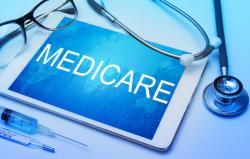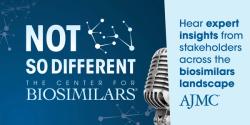© 2025 MJH Life Sciences™ and The Center for Biosimilars - Biosimilars, Health Economics & Insights. All rights reserved.
A Closer Look at New FDA Guidance Removing Barriers to Biosimilar Development
FDA's new guidance streamlines biosimilar development, reducing costs and regulatory hurdles and potentially enhancing market access and affordability.
The FDA has issued draft guidance that stakeholders say could significantly accelerate the entry of biosimilars into the US market, potentially unlocking substantial cost savings for the health care system.1
The guidance, "Scientific Considerations in Demonstrating Biosimilarity to a Reference Product: Updated Recommendations for Assessing the Need for Comparative Efficacy Studies," outlines updated criteria for when a comparative efficacy study (CES) may not be necessary for a biologics license application (BLA) submitted under section 351(k) of the Public Health Service Act. This update supersedes the agency’s 2015 guidance and reflects its evolving scientific approach to biosimilar evaluation.
Shifting From Clinical Trials to Analytical Science
Historically, biosimilar development has been slowed by complex, costly regulatory requirements. CESs, in particular, have represented a significant bottleneck—both financially and logistically.2
The FDA’s draft guidance emphasizes that advanced analytical technologies can now detect minor differences between highly purified proteins more precisely than clinical trials.1 A well-conducted comparative analytical assessment (CAA) is often more sensitive than a CES, whose outcomes may be affected by factors such as dose selection, patient population variability, or trial design.
Under the new framework, a CES may be waived if:
- The biosimilar and reference product are highly purified, derived from clonal cell lines, and analytically well characterized
- Key quality attributes of the reference product are well understood and measurable via CAA
- A human pharmacokinetic (PK) similarity study is feasible and clinically meaningful
By prioritizing analytical studies over routine CESs, the FDA aims to reduce both the time and cost of biosimilar development—potentially trimming expenses estimated between $100 million and $300 million per program and shortening development timelines by several years.3
Policy Leaders Highlight Potential Savings
The draft guidance has drawn praise from policy makers and industry advocates. HHS Secretary Robert F. Kennedy Jr described previous regulatory requirements as burdened by “sky-high costs [and] endless red tape,” stating that the guidance replaces “bureaucracy with science, monopolies with competition, and despair with hope.”3
FDA Commissioner Marty Makary, MD, emphasized that removing unnecessary barriers could expand competition, lower biologic prices, and improve patient access. Similarly, the Biosimilars Forum called the guidance “momentous” in addressing the US prescription drug affordability crisis.4 Executive Director Juliana M. Reed noted, “Now more than ever, it is clear that biosimilars—safe, effective, and lower-cost medicines that reference biologics—are key to fixing America’s healthcare affordability crisis. Nearly 30% of Americans say they have not taken their medication as prescribed due to unaffordable prices. Today’s updated guidance from the FDA and Commissioner Makary on biosimilars is a momentous, critical step in unlocking the potential of these modern treatments to lower prescription drug prices for all Americans.”
Reed also highlighted that biosimilars have already generated over $56 billion in US savings and that the new framework could unlock an additional $181 billion over the next 5 years.
Clarifying Interchangeability Claims
At the press conference announcing the draft guidance, the policy makers repeatedly emphasized that all biosimilars should be considered interchangeable with their reference products.3 They suggested this designation would allow pharmacists to automatically substitute biosimilars and encouraged state governors to actively promote biosimilar use, framing interchangeability as a key tool to expand access and reduce costs.
The officials did acknowledge that some states require notification to patients or providers when a biosimilar substitution occurs. However, they did not address portions of the country that maintain total bans on substitution, nor clarify whether these laws would be considered void under the new federal guidance. As previously reported by The Center for Biosimilars®, 4 states and Puerto Rico currently prohibit automatic biosimilar substitution, requiring prescriptions to explicitly name the biosimilar.5 Without federal preemption or updated state legislation, it remains uncertain how these restrictions would interact with the federal guidance, creating ambiguity about the practical effect of the press conference claims.
Previously, a biosimilar can carry the FDA’s interchangeability designation only if the manufacturer requests it and provides additional evidence demonstrating that the biosimilar produces the same clinical result as the reference product in any given patient, and that switching between the products poses no additional risk. Additionally, interchangeability typically applies only to pharmacy-dispensed biologics, typically self-administered therapies such as adalimumab or insulin in which a provider is not present for the substituion. Laws around interchangeability have never restricted access to provider-administered biologics, meaning patients receiving clinic-based therapies—including many oncology treatments—continue to access biosimilars regardless of interchangeability status.6
Thus, while the statements from Kennedy, Makary, and Oz conveyed strong political support for biosimilars, they may overstate the immediate practical impact, particularly in jurisdictions with restrictive substitution laws or total bans, or for patients receiving clinic-administered biologics.3
The “Biosimilar Void” Persists
Despite regulatory momentum, the so-called biosimilar void remains a critical challenge. According to Samsung Bioepis, 118 biologics representing nearly $232 billion in US sales are expected to lose patent protection between 2025 and 2034, yet only about 10% of these have biosimilars in active development.5
This gap reflects multiple barriers:
- Limited return on investment for niche or rare-disease products: Manufacturers hesitate to invest heavily in biosimilars for small patient populations
- Manufacturing complexity: Advanced biologics—such as bispecific antibodies or cell-based therapies—require specialized facilities and expertise
- Prolonged development timelines: Even with streamlined guidance, bringing a biosimilar to market can take nearly a decade
- Market uncertainty under the Inflation Reduction Act: Price negotiations and shifting reimbursement rules have created new disincentives for some biosimilars, particularly those approaching Medicare negotiation windows.7
Without additional reforms—such as addressing rebate structures, patent thickets, prescriber incentives, biosimilar education gaps, and pharmacy benefit manager transparency—the US may not realize the full potential of biosimilar competition.
Additionally, many biosimilars are developed by international companies that have licensing and commercialization agreements with larger American-based companies. With the Trump administration's previous statements about potentially placing tariffs on international pharmaceutical products and initiatives to bring more pharmaceutical manufacturing into the US, it's uncertain if there will be unintended interactions between policies that may create new barriers to bringing biosimilars to market.8
Implications for Managed Care and Patient Access
For managed care executives, payers, and provider systems, the FDA’s draft guidance represents a critical step toward faster, more cost-effective biosimilar entry. However, the benefits of these reforms could take years to materialize, underscoring that policy change alone will not close the biosimilar void.
They encouraged patients to “ask their doctors about biosimilars,” a call that highlights a disconnect between perception and reality. For many therapeutic areas, biosimilars still do not exist; for others—particularly in oncology—biosimilars are so widely adopted that patients may already be receiving them without realizing it.9 As a result, the immediate public impact of this guidance is likely to be modest, even as it lays the groundwork for long-term gains in affordability and access.
If development efficiencies are not paired with improved commercial viability, many biologics will continue to struggle to gain market uptake, and potential cost savings will remain unrealized. Stakeholders must now look beyond regulatory reform to focus on aligning incentives, ensuring manufacturing capacity, and reinforcing provider and patient education to build lasting confidence in biosimilars.
References
- Scientific considerations in demonstrating biosimilarity to a reference product: updated recommendations for assessing the need for comparative efficacy studies. FDA. October 29, 2025. Accessed October 29, 2025. https://www.fda.gov/regulatory-information/search-fda-guidance-documents/scientific-considerations-demonstrating-biosimilarity-reference-product-updated-recommendations
- Niazi SK. BioRationality: the FDA sets sights on removing clinical efficacy studies for biosimilars. The Center for Biosimilars®. October 29, 2025. Accessed October 29, 2025. https://www.centerforbiosimilars.com/view/biorationality-the-fda-sets-sights-on-removing-clinical-efficacy-studies-for-biosimilars
- Biosimilars reform. FDA. October 29, 2025. Accessed October 29, 2025. https://www.hhs.gov/live/live-1/index.html#12163
- Biosimilars Forum applauds FDA and Commissioner Dr. Marty Makary for supporting safe, effective and lower-cost biosimilars. The Biosimilars Forum. October 29, 2025. Accessed October 29, 2025. https://biosimilarsforum.org/2025/10/29/biosimilars-forum-applauds-fda-and-commissioner-dr-marty-makary-for-supporting-safe-effective-and-lower-cost-biosimilars/
- Jeremias S. The biosimilar void: 90% of biologics coming off patent will lack biosimilars. The Center for Biosimilars. February 5, 2025. Accessed October 29, 2025. https://www.centerforbiosimilars.com/view/the-biosimilar-void-90-of-biologics-coming-off-patent-will-lack-biosimilars
- Jeremias S. The age of adalimumab is upon us: how stakeholders can prepare. The Center for Biosimilars. June 28, 2023. Accessed October 29, 2025. https://www.centerforbiosimilars.com/view/the-age-of-adalimumab-is-upon-us-how-stakeholders-can-prepare
- Jeremias S. The Trump administration’s drug price actions and why US prices are already sky-high. The Center for Biosimilars. May 17, 2025. Accessed October 29, 2025. https://www.centerforbiosimilars.com/view/the-trump-administration-s-drug-price-actions-and-why-us-prices-are-already-sky-high
- Trump delaying triple-digit pharma tariffs to negotiate drug price deals. Politico. October 1, 2025. Accessed October 29, 2025. https://www.politico.com/news/2025/10/01/trump-delays-triple-digit-pharma-tariffs-to-negotiate-drug-price-deals-00590051
- Santoro C. Biosimilar uptake lags in US despite potential cost savings. AJMC®. August 16, 2024. Accessed October 29, 2025. https://www.ajmc.com/view/biosimilar-uptake-lags-in-us-despite-potential-cost-savings



